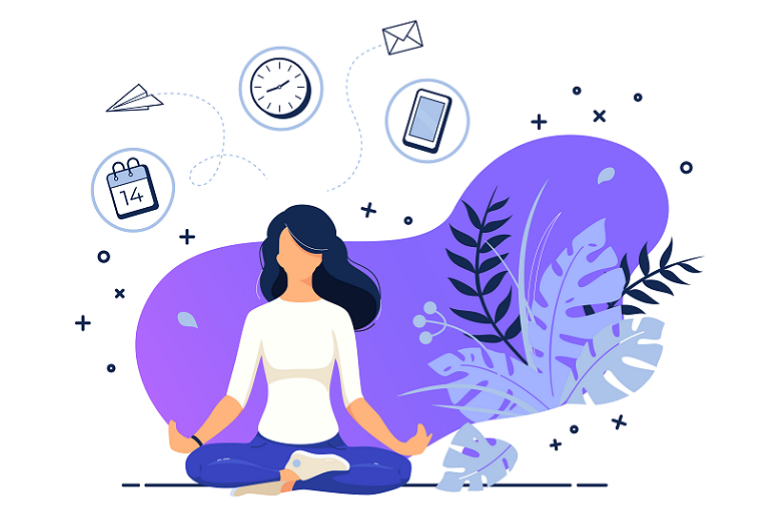As I look at my calendar, devoid of concerts, conventions, trips, or anything else that I’d normally use to recharge mentally, I can’t help but feel a bit, well, stressed.
And I know that I’m not alone in my struggle — that for many people, COVID-19 and WFH made wellness at work seem like a near-impossible task. This has been seen by a record level of burnout, fatigue, and increased mental health concerns among workers during COVID-19.
A survey report from FlexJobs and Mental Health America painted the picture in stark terms, stating that three-quarters of working adults experienced burnout and that employees are three times as likely to report poor mental health now than before the pandemic.
So, this begs the question: What can improve employee wellness? One answer appears to come from merging wellness services and technology. Consider
Thrive Reset, an app developed by Thrive Global, the behavior change technology company funded by Arianna Huffington. This app, which runs inside Zoom meetings, lets users access a one-minute guide to stretching, gratitude, or mindfulness to combat virtual fatigue. Neuroscience research that shows it only takes a minute to “course-correct from stress” inspired the app, Thrive Global said.
Thrive Reset is just one example, as many in both the technology and wellness industries are looking at ways to combat stress and improve the well-being of employees during the pandemic (see related post, “
Working Wellness Into the Workday”). A couple more applications of note:
- Calm — A sleep, meditation, and wellness app that features a library of music, audio classes, and video lessons
- Headspace — A meditation app that features guided meditations, animations, articles, and videos
- Sanvello — A self-care, peer support, coaching, and therapy app designed to combat depression and anxiety
- Youper.ai — A mental health service that features therapy sessions with an AI-powered assistant, which also monitors anxiety, depression, panic, and other conditions
These apps and many others are interesting, but I’m a little skeptical that they’re going to change the WFH employee experience by the amount we need. For those looking for a mental escape from the technology that binds their day-to-day, is adding one more app going to suddenly change everything? I don’t doubt the benefits of meditation, as someone that dabbles in it, therapy, or finding little ways to reset your day (may I suggest turning up the volume and headbanging?). But I do worry that the overreliance on technology is what caused many to feel fatigued in the first place.
Don’t get me wrong, the focus on wellness and the employee experience is a must now more than ever, but I wonder if the focus should be placed elsewhere. In writing this article, I stumbled on
this blog post from the University of Michigan, with insight from Kelcey Stratton, a clinical psychologist at Michigan Medicine, on the emergence of technology fatigue and what to do about it. While Stratton’s advice is similar to what the wellness apps are recommending (for instance, taking micro-breaks), it focuses more on routine, understanding your body rhythm and, yes, scheduling fewer meetings.
Additionally, Stratton shared how switching from video to voice only, allows meeting participants to focus more intently on what’s being said. And maybe that’s a key to countering WFH fatigue: not using all the technology simply because it’s there.




